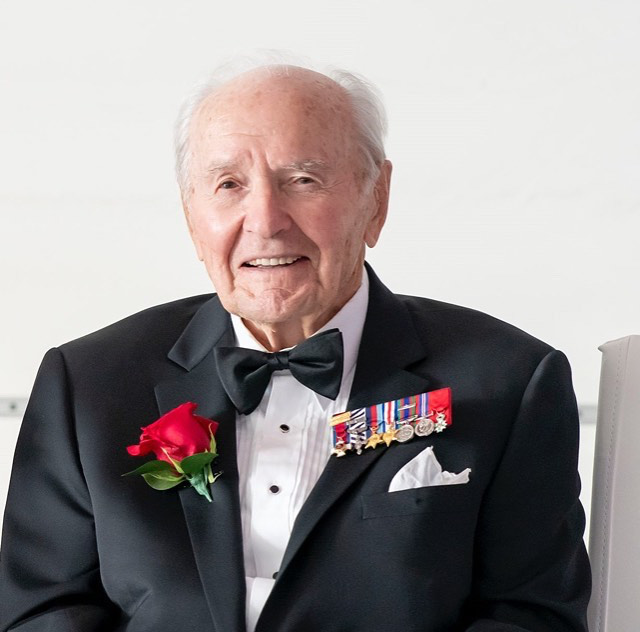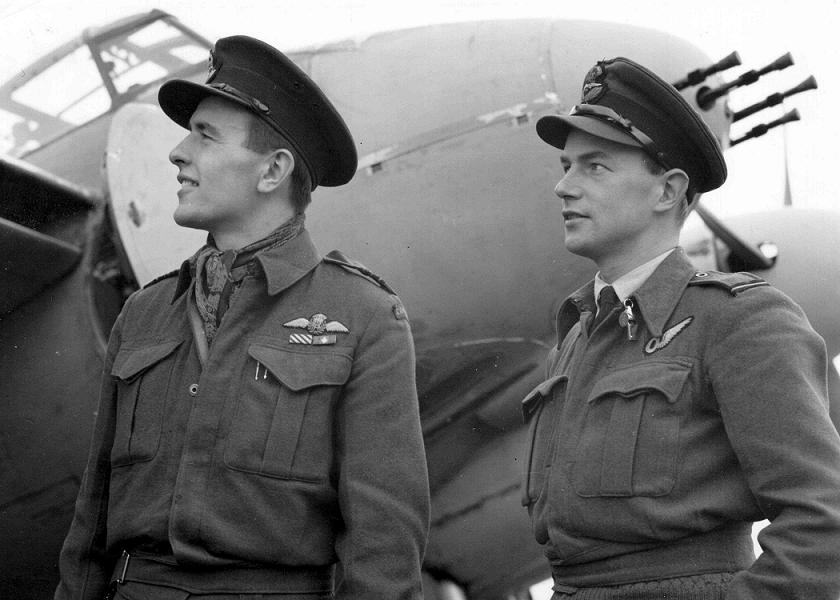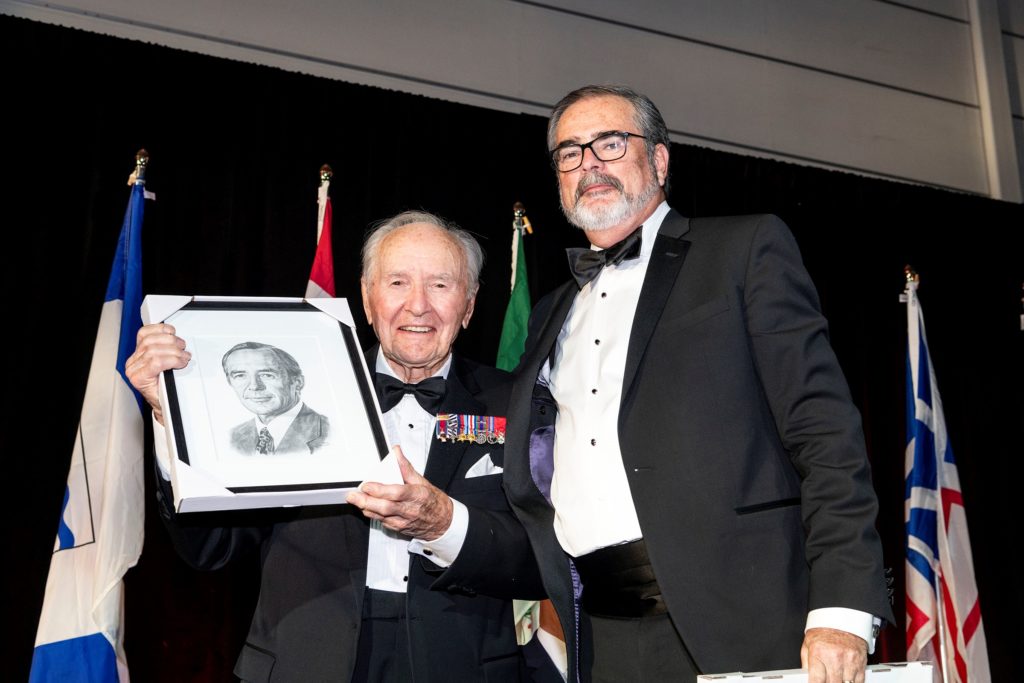Estimated reading time 5 minutes, 50 seconds.
There were big plans in the works for Russell Bannock’s 100th birthday on Nov. 1, 2019.

In an October email to Skies, his son Michael Bannock said the centenarian was aiming to renew his aviation medical and planned to celebrate his big day by flying a beautiful stock piston Beaver on straight floats from the Toronto Harbour.
In his note, Michael added, “This will be the exact spot he departed from in September of 1947 when he did the first flight of the Beaver on floats.”
Unfortunately, Mother Nature intervened and inclement weather prevented the birthday flight. Instead, Bannock’s family gathered for a celebration at Toronto’s Granite Club.
But the ambitious plan itself is still evidence of Bannock’s ageless spirit and his love for aviation, an industry in which he played a fundamental role since beginning his flight training in 1937 at the Edmonton Flying Club.
Now, a little more than two months after his 100th birthday, the Canadian aviation community is mourning the passing of Russell Bannock on Jan. 4, 2020.
According to Canada’s Aviation Hall of Fame (CAHF), which inducted Bannock in 1983, the Edmonton native earned his private pilot’s licence in 1938 and his commercial licence the following year.
He joined the Royal Canadian Air Force (RCAF) when the Second World War broke out, and was posted in 1940 as a flying instructor to the Central Flying School in Trenton, Ont. By September 1942, Bannock was chief instructor at No. 3 Flying School in Arnprior, Ont. In total, he delivered more than 2,000 hours of instruction to student pilots enrolled in the British Commonwealth Air Training Plan.

In 1944, he was sent overseas and joined the RCAF’s No. 418 Squadron in June of that year, flying de Havilland Mosquitos on intruder missions over Europe. His success prompted his appointment as a flight commander and he was soon promoted to Wing Commander and given command of 418 Squadron in October 1944.
Shortly thereafter, he was posted to 406 Squadron as commanding officer and was awarded the Distinguished Service Order for outstanding leadership in that command.
During this period, Bannock teamed up with Navigator F/O Robert Bruce. Together, Bannock and Bruce waged war on Germany’s V-1 jet-powered “flying bombs” or “buzz bombs,” at one point destroying four in just one hour.
According to CAHF, “By April 1945, he had accounted for the destruction of 11 enemy aircraft and 19 V-1 ‘flying bombs,’ had earned himself the title ‘The Saviour of London,’ and the distinction of becoming the RCAF’s leading night fighter of World War II.”
He was also Canada’s second-highest-scoring flying ace.
Bannock became director of operations at the RCAF’s London headquarters in May 1945, remaining in that post until September, when he attended Royal Air Force Staff College.
Upon his retirement from the RCAF in 1946, Bannock began the next stage of his phenomenal flying career. He returned home and joined de Havilland Aircraft Company of Canada Ltd. in Downsview, Ont., as chief test pilot and operations manager.
In 1947, he flew the de Havilland DHC-2 Beaver prototype and demonstrated its short takeoff and landing (STOL) capabilities so well that 978 were subsequently ordered by the U.S. Army and Air Force.
Throughout the 1950s and 1960s, Bannock found success selling the company’s other STOL aircraft, including the Otter, Twin Otter, Caribou and Buffalo. He took a brief hiatus from de Havilland in 1968 to found Bannock Aerospace Ltd, his own consulting business, before returning to the manufacturer in 1975 and being promoted to the position of president and CEO, before leaving again in 1978 to return to Bannock Aerospace.

He has served and been affiliated with numerous industry organizations, including the Canadian Aeronautical Institute, the Canadian Aerospace Industries Association and the Canadian Fighter Pilots Association. Bannock also served as chairman of CAHF from 1988 to 1995. He attended the Hall’s most recent annual induction dinner in Montreal in May, where he was presented with his own portrait rendered by the late Irma Coucill, a renowned Canadian artist. As recently as this past fall, he reportedly played golf when the weather was fair and curled three times a week.
He is survived by his four children, 11 grandchildren and five great grandchildren.
Bannock’s legendary contributions to the RCAF and civilian aerospace are without parallel. His loss is sorely felt by all those who honour his memory and many significant accomplishments.









He played golf at York Downs Golf & Country Club in Markham. Interesting to know we had one of the country’s finest WWII flying aces among our membership!
Russ Bannock,a truly great canadian hero,RIP